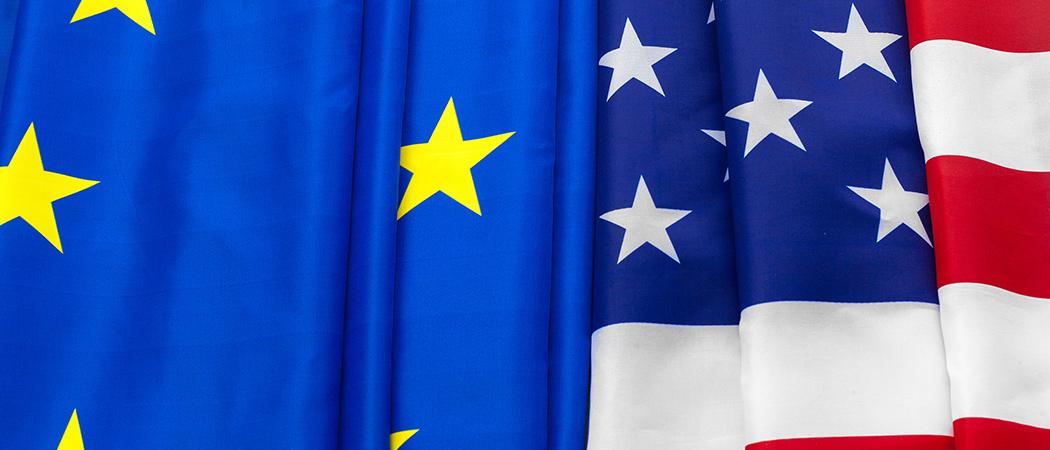In response to questions from Science|Business, US and EU officials sent this statement about a research-planning meeting they held October 12 in Brussels

For the first time in five years, senior US and EU officials met under a longstanding science diplomacy pact to plan new collaborations. This statement on the outcome was attributed to the two delegation leaders: Signe Ratso, EU research and innovation acting director-general, and Monica Medina, assistant secretary for oceans and international environmental and scientific affairs at the US Department of State. Read the Science|Business report of the meeting here.
- Did the two sides in the meeting agree to expand R&I collaboration in any fields? Which ones? How? Through what programmes? With what funding? And effective when?
The partnership between the United States and the European Union in science and technology has never been stronger. Together, we are advancing the frontiers of science to benefit all of humankind.
The EU-U.S. Joint Consultative Group meeting of 12 October 2022 was very successful, with the participation of a high-level delegation from the United States and the EU.
We agreed to expand our collaboration in new areas in health, with increased cooperation on the climate-health nexus and on cancer.
We also discussed the green transition emphasising the already successful ongoing cooperation on ocean research, in addition to new areas of action in transport research, including in greening aviation. Our teams also agreed on need for developing joint modelling capacity for climate, together with increasing the ambition in our cooperation on earth observation. Both sides recognized the need for more collaborative research related to the circular economy on issues such as circularity by design.
There was also an agreement to strengthen research training and mobility, and acknowledgement of the need to explore more reciprocal research mobility across the Atlantic.
And, we highlighted the importance of cooperation on science and society issues for making scientific systems more resilient to disinformation, and to promote evidence-based decision making.
2. Was there any discussion on coordination of how the two sides handle Russia and China in R&I collaboration? If so, what conclusions? Was there any discussion of research security and integrity, and was there any agreement on further steps to handle that issue – either bilaterally or through the G7 format?
We exchanged information on each side's efforts to engage Ukrainian scientists – both displaced and those who remain in the country – who were rendered financially vulnerable by Russia's illegal invasion of Ukraine.
We reaffirmed our support for Ukrainian scientists and are working together in the framework of the Science and Technology Center in Ukraine. Currently, the United States is funding a short-term fellowship program for displaced Ukrainian nuclear scientists and capacity-building in knowledge security and research vetting for displaced scientists, while the EU is supporting nuclear scientists displaced in Europe, and preparing a training on cybersecurity/protection of critical infrastructure and security by design. The EU also supports the Ukrainian research and innovation community through Ukraine’s association to Horizon Europe and Euratom programmes, as well as through dedicated support measures such as a fellowship scheme under the Marie Skłodowska-Curie Actions and the European Innovation Council initiative for Ukrainian deep tech startups.
We discussed the need to rebuild Ukraine's research infrastructure and strengthen the research and innovation ecosystem over the longer term, as well as early efforts in this regard. We identified synergies in our respective efforts and opportunities to deepen our collaboration in support of Ukrainian science.
We also held a robust discussion regarding research security and integrity and focused on behaviours, policies, and norms. We agreed to continue to work through the G7 and would expand the conversation to other international partners through the recently launched multilateral dialogue on values and principles in international R&I collaboration, which will focus on values, best practices, information-sharing, means to encourage mutually beneficial international collaborations, and tools to assess and address risks.
3. Is there any progress evident yet in US researchers or innovators becoming ‘associated partners’ in Horizon Europe? What are the most recent statistics on that? Are there further steps planned by either side for this kind of participation to be increased?
The “associate partner” status for unfunded U.S. collaborators in the Horizon Europe project is an important and appreciated step forward.
We are working collectively to communicate the flexibilities that this status provides to researchers in the EU and the United States, and we hope that this will lead to increased participation by U.S. researchers. To date, in Horizon Europe, there are 196 U.S. participants in 162 projects, the vast majority of which are using the associated partner status.
During the JCG meeting, we also discussed international research experiences, which play an invaluable role in building careers, seeding long-term collaborations, and retaining talented researchers along the STEM career pathway. The European Commission and U.S. Government emphasised our shared interests in promoting existing opportunities and expanding collaboration on this important topic. Future discussions will prioritise efforts related to increasing the diversity of scholars who benefit from these powerful opportunities and in exploring reciprocal mobility activities.





 A unique international forum for public research organisations and companies to connect their external engagement with strategic interests around their R&D system.
A unique international forum for public research organisations and companies to connect their external engagement with strategic interests around their R&D system.